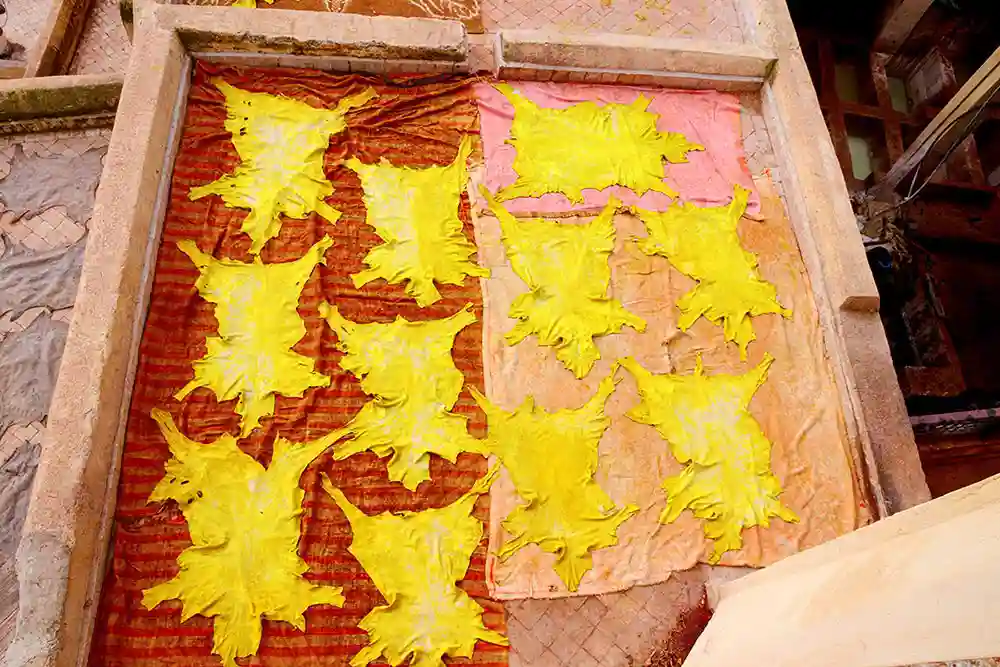Other uses of saffron
 Saffron has been used as a natural dye since its earliest prominence in history, coloring fabrics to signify social status and religious functions. For example, Phoenician and Carthaginian brides wore saffron-dyed veils and nobles wore saffron-dyed garments. Buddhist, Tibetan and Hindu monks dyed their famous robes with saffron. In Ireland people dyed their wool with saffron and in Japan it was used to dye silk to make colorful kimonos.
Saffron has been used as a natural dye since its earliest prominence in history, coloring fabrics to signify social status and religious functions. For example, Phoenician and Carthaginian brides wore saffron-dyed veils and nobles wore saffron-dyed garments. Buddhist, Tibetan and Hindu monks dyed their famous robes with saffron. In Ireland people dyed their wool with saffron and in Japan it was used to dye silk to make colorful kimonos.
Aristocratic women and courtesans of the olden days used saffron as cosmetics and skin care. Face masks mixed with saffron are applied by women to make their skin soft, smooth and free from acne and pimples. Sandalwood and saffron mixed with milk used as a mask makes the face smooth and radiant. Honey, coconut oil and sugar can also be used to make face masks. Saffron powder also acts as an exfoliant, leaving the skin clear and radiant. Saffron extract contains antibacterial properties that are also said to treat pimples, acne and other skin diseases such as psoriasis and leprosy.
In ancient stories it was told that the Greek god Zeus slept in a bed studded with saffron; that in ancient Egypt, at royal festivities and religious rituals, women wore wax cones on their heads infused with flowers and saffron which, when melted, perfumed their hair with a sweet, pungent scent; that warlords bathed in tubs filled with water sprinkled with saffron threads, to treat wounds which they inflicted on the battlefield; and that the Romans perfumed their wedding beds with saffron, apparently for sensual reasons.
In the Middle East, sandalwood and saffron were mixed to create a relaxing scent that also relieved headaches. Modern perfumers take advantage of the fact that saffron blends as a middle note with other essences and fragrances to create new floral perfume formulas.
In India and Pakistan, they have a hundred-year-old custom of mixing saffron with tobacco to make zaafrani zarda and zafrani patti, a special kind of chewing and snuff tobacco.
Finally, saffron is a beautiful and elegant gift on special occasions such as Christmas, weddings, Ramadan and other religious events, as it is expensive and thus has a high status symbol.






















 BIO bulbs
BIO bulbs
 NON-BIO bulbs
NON-BIO bulbs
 Wholesale
Wholesale
 Miscellaneous flower bulbs
Miscellaneous flower bulbs
